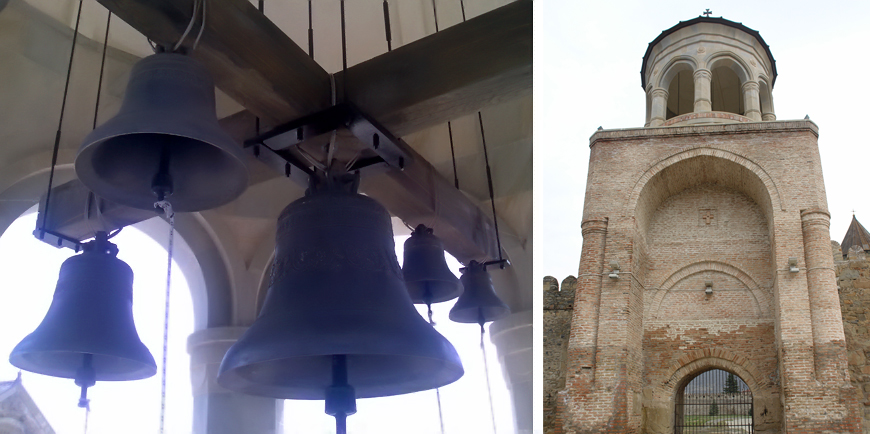Svetitskhoveli Cathedral – located in the town of Mtskheta, 20 km northwest of Tbilisi – is Georgia’s second-largest church and one of the country’s most treasured and sacred places of worship, having been serving as the religious center to Georgian Christians for many centuries. The Cathedral known as the burial site of Christ’s mantle plays an important part in Georgia’s architectural and religious history. Svetitskhoveli Cathedral is on the UNESCO World Heritage site list. The present-day Svetitskhoveli Cathedral was built in 1010-1029 by the Georgian architect Arsukisdze. The cathedral is surrounded by a defensive wall with 8 towers, built in 1787 of stone and brick. The cathedral’s bell tower, situated on the wall next to the main entrance, was considerably damaged through time. During the last two centuries, the tower was in ruins, with only one third of the structure being intact. Benediction by His Holiness and Beatitude, Archbishop of Mtskheta-Tbilisi and Catholicos-Patriarch of All Georgia Ilia II marked the beginning of the construction and restoration works in 2005, which were made possible through the initiative and financing by Mamuka Khazaradze. David Latsabidze, General Director of NCC, was in charge of the restoration works on the tower. He brought together a team of highly qualified specialists, who performed the foundation-strengthening works and carried out the restoration of the belfry, the arches and the adjoining stairwell. The Patriarchate was consulted on the selection of the bells for the belfry. Seven bells of different sizes were especially made and brought from Yaroslavl, Russia. When professionals finished their work, the bell tower of the Svetitskhoveli Cathedral regained its original appearance.
 Svetitskhoveli
Svetitskhoveli
